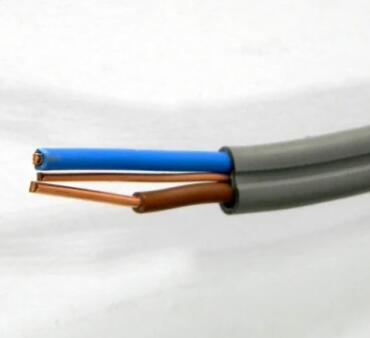Ampacity Unveiled: Determining the Capacity of Wires and Its Crucial Role
2023-12-21
Introduction:
In the intricate tapestry of electrical systems, where currents flow like the lifeblood of modern technology, the ampacity of wires takes center stage. Ampacity, or ampere capacity, refers to the maximum current-carrying capability of a wire without exceeding its temperature rating. Understanding how the ampacity of a wire is determined is essential for ensuring the safety, reliability, and efficiency of electrical installations. In this blog post, we'll unravel the intricacies of ampacity, exploring how it is determined and why it holds paramount importance in the world of electrical engineering.
What is Ampacity and Why Does It Matter?
1. Defining Ampacity:
Ampacity is the maximum current a conductor can carry without exceeding its temperature rating. It is expressed in amperes and is a critical factor in determining the appropriate size and type of wire for a given electrical application.
2. Temperature Considerations:
The temperature rating of a wire is crucial in ampacity calculations. As current flows through a wire, it generates heat due to the inherent resistance of the conductor. If the current exceeds the ampacity, the wire may heat up beyond its rated temperature, leading to degradation, insulation damage, and potential fire hazards.
3. National Electrical Code (NEC) Guidelines:
The determination of ampacity is guided by standards such as the National Electrical Code (NEC) in the United States. The NEC provides tables, charts, and guidelines based on factors such as wire size, insulation type, ambient temperature, and the number of conductors bundled together.
Factors Influencing Ampacity:
1. Wire Size:
The cross-sectional area of the wire, commonly referred to as wire gauge or size, is a primary factor influencing ampacity. Larger wire sizes have greater cross-sectional areas, allowing them to carry more current without excessive heating.
2. Insulation Type:
The type of insulation surrounding the conductor plays a significant role in determining ampacity. Different insulation materials have varying temperature ratings and thermal characteristics, affecting the wire's overall ability to dissipate heat.
3. Ambient Temperature:
The environmental temperature surrounding the wire, known as the ambient temperature, is a critical factor. Higher ambient temperatures reduce the ability of the wire to dissipate heat, influencing its overall ampacity.
4. Conductor Bundling:
When multiple conductors are bundled together, the heat generated by each conductor can affect the overall temperature of the bundle. NEC guidelines provide adjustments for ampacity reduction based on the number of conductors in a bundle.
5. Installation Method:
The manner in which the wire is installed, whether it's in free air, in a conduit, or in direct contact with a surface, can impact its ability to dissipate heat. Different installation methods may have different ampacity ratings.
Ampacity Calculation and Tables:
1. NEC Ampacity Tables:
The NEC provides tables that specify the allowable ampacities for different wire sizes, insulation types, and ambient temperatures. Engineers and electricians use these tables as a reference to ensure compliance with safety standards.
2. Conductor Derating:
In situations where multiple factors influence ampacity, a process known as derating is applied. Derating involves reducing the allowable ampacity based on specific conditions, such as the number of conductors in a conduit or the ambient temperature.
Conclusion:
The determination of ampacity is a meticulous process that involves considering various factors to ensure the safe and efficient transmission of electrical currents. As technology advances and electrical systems become more intricate, the importance of accurately assessing ampacity becomes increasingly vital. Ampacity is not merely a technical detail but a critical aspect that underpins the safety, reliability, and efficiency of the electrical infrastructure that powers our modern world. In the pursuit of electrifying progress, understanding and respecting ampacity guidelines stand as foundational principles in the field of electrical engineering.



